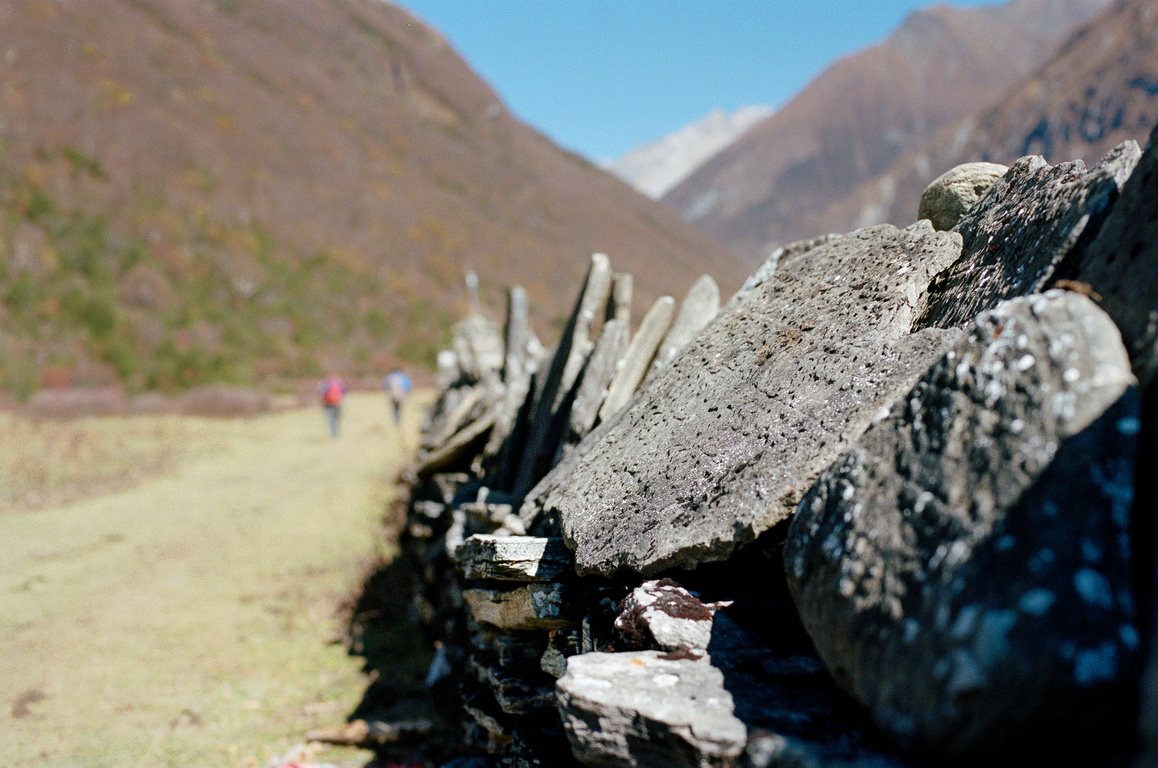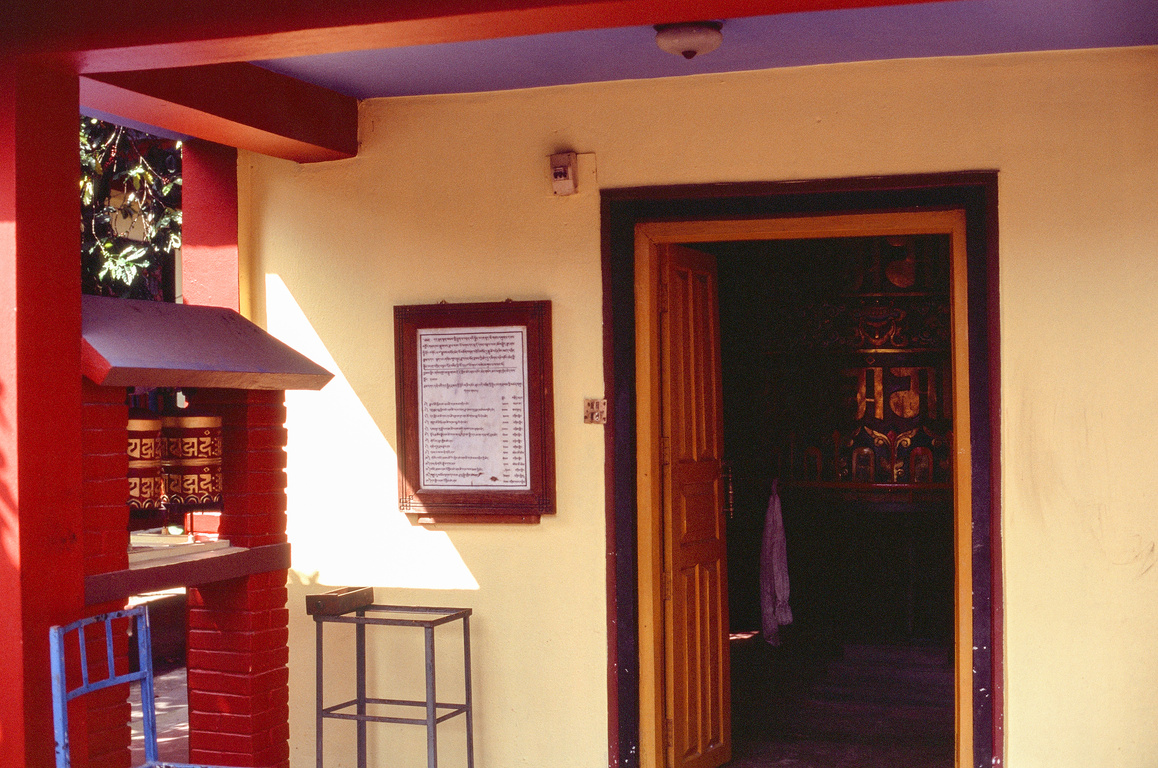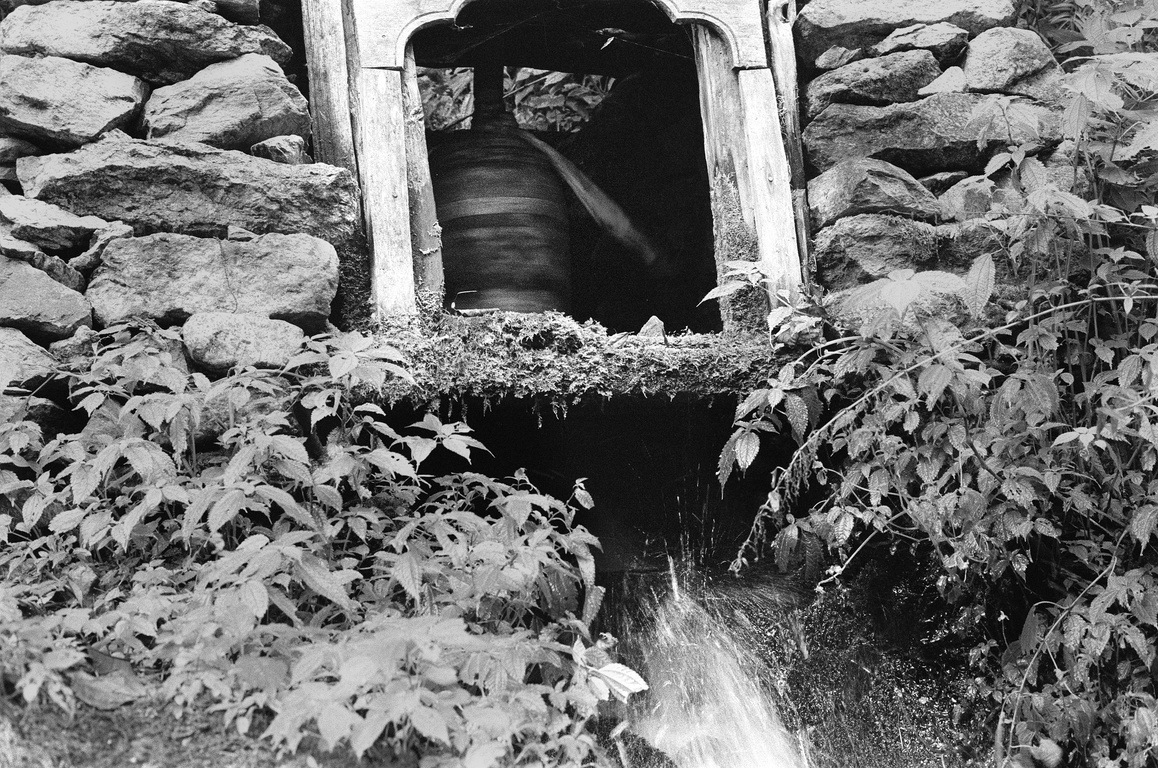om mani padme hum

Hiking along the trails in Nepal, you’ll often find big piles of flat stones. Upon closer inspection, you’ll find that the stones have inscriptions upon them — lettering that doesn’t appear like any of the other Devanagari script that you’ll see around the country, but instead usually in either Lantsa or Tibetan scripts (not that that’ll help you, of course, because you can read none of the three of them). They have been painstakingly carved, and there’s just an enormous number of them; sometimes, you’ll find piles four or five feet tall by thirty feet long by a few feet wide, all made of these flat stones, all with the same lettering on them. They’re a curious artifact.
We found them, too. After a few of these piles, we asked Binod about them, and he started to clue us in: he said that those piles were called “mani”, and they were carved by monks. He said they had a prayer inscribed on them, but he didn’t know what the prayer was; he couldn’t read the script, and anyway, didn’t have the context. This didn’t surprise us. I did some reading about them later, and found that the stones were the artifact of a sadhana, a devotional practice. The prayer carved on them, of course, was a mantra (a phrase that you repeat over and over again) — to be specific, in the places that we saw these things, it usually was “om mani padme hum”. I can’t do justice to the mysticism involved, but to give you an idea, it begins by invoking the sacred syllable om — roughly, “I meditate on…” — and, depending on who you ask, describes the concepts of enlightenment, a meditation bead, a jewel, and a lotus flower; His Holiness, the 14th Dalai Lama, says that it is the path of transformation from a simple impure body into a Buddha.
No wonder, then, that monks all over the Tibetan regions of Nepal carve these — and, indeed, take any opportunity to bring this process of transformation into the world! A mantra like this can be chanted, or simply recited silently, said to increase its power each time someone says it. Should not the whole world be like Buddhas, after all? During our travels in Nepal, I found some curious mantric innovations.

One apparatus that I noted on a regular basis is was a prayer wheel, with the lettering of the mantra carved on it. (Binod called these “mani”, also.) You’ll usually find them about as about a foot and a half tall cylinders, red, with yellow or bronze decorations and carved letters. (Sometimes, they’re all bronze metal.) The idea of them is that you give them a spin, and each time one spins around, it’s as if the mantra was recited. They’re placed, often, in auspicious locations — perhaps, the border gate of a village, or at a monastery — but, just as likely, they’re placed in high-traffic areas.
An innovation on this is to place not just one mani wheel, but many — or, even, to place mani wheels in a continuous loop around the perimeter of something! Kempy and I found such a loop with what must have been 50 mani wheels in a square at the monastery of the Tibetan refugee settlement in Pokhara; we walked once around spinning them, having perhaps effectively caused the recitation of “om mane padme hum” more times in a few minutes than we had in the rest of our lives. A monk took note of this, and caught our eye; he presumably spoke no English, and anyway, we didn’t speak any Nepali, but he gestured something that we took to clearly mean “go on, keep doing it”, so we took another few laps.
As we walked away eventually, the wheels squeaked to a halt. I made the conjecture that, if His Holiness is right, one of the most important peace programs that anyone in the world could establish would be to redirect a few tens of thousands of ball bearing cartridges to Nepal. Can you imagine how many more repetitions there would be if they replaced all of those plain thrust bearings with mani that just kept spinning and spinning?
By far, the most clever mantric innovation that I saw in my time in Nepal was a simple and direct follow-on to everything else that I had seen. In the Himalaya, there are streams flowing everywhere, perhaps a direct consequence to the steep terrain and the glaciers above. Waterfalls are an hourly, if not more frequent, appearance along the trail, so much so that it became a running joke (Binod pointed a few out, and then I took to pointing out every single one I saw, per the universal rules for how running jokes should operate). Beyond that, almost all of the power generated in the villages that we stayed in was hydroelectric — either grid hydro, or, more often, micro-hydro — and, for that matter almost all of the power in Nepal period is hydroelectric (an installed capacity of about 1GW, with about 5GW more under construction).
Of course, Nepalis use hydro power for all manner of things. Around the trail, we saw a good number of “extremely-micro”-hydroelectric, but even without the electric part, we saw hydro-powered grain mills. These are all good uses of a free, renewable natural resource, with energy that would otherwise be wasted to waterfalls, and I’m certainly happy to have these exist. But for my rupees, maybe the most peaceful use was what I saw below: a water-driven mani wheel. Day and night, 24 hours a day, 365.25 days a year, the "auto-mantra" wheel spins, endlessly propelling the power of om mani padme hum into the collective consciousness, with or without a human hand ever touching it again.
Truly, these are the innovations that make the world a better place.

If you would like some of this mantric power in your own life, I recommend that you listen to the following audio clip, ideally in its entirety. It is the song of Nepal, played on repeat in almost any establishment you can conceive of. Do yourself a favor, and give it a spin.
I think I have a few more of these left to write. If you don't have a Dreamwidth account, but you want to get notified so you can read more things like this when I write them, I also have an e-mail list; I promise I'll only send mail for things that I write that go here on this blog.